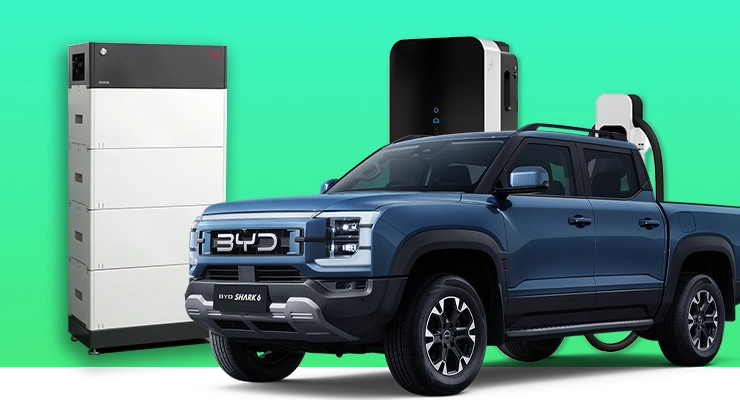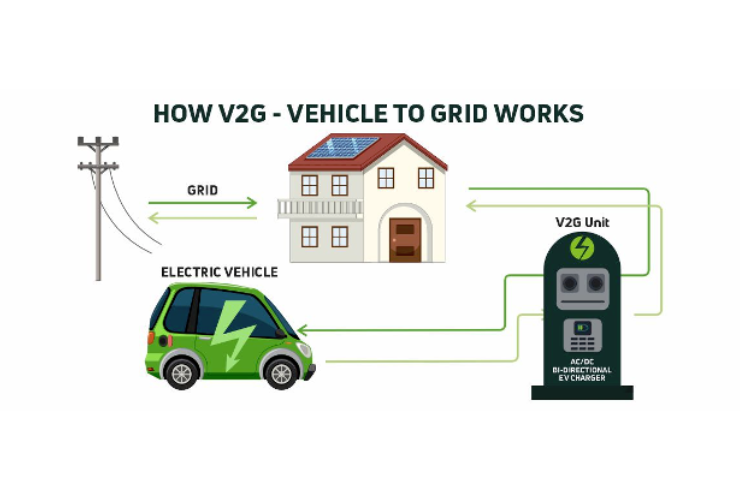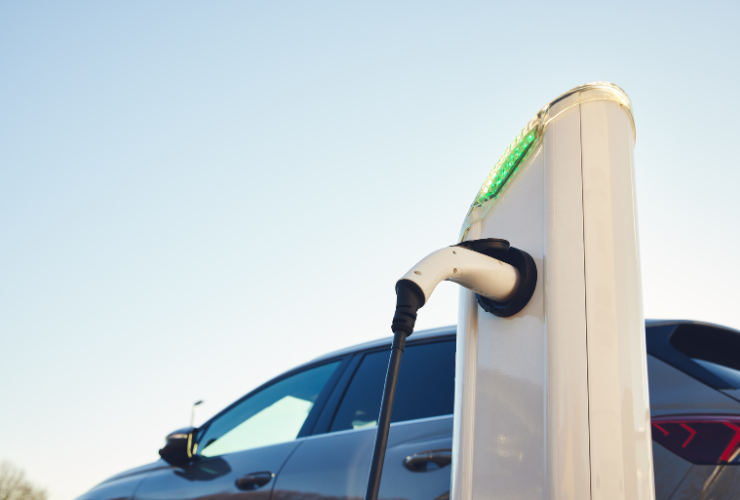Fast read
Investing in a solar battery system today does not make it obsolete in a Vehicle-to-Grid (V2G) future; in fact, they can work together. V2G capability primarily depends on a specialised bi-directional EV charger and a compatible electric vehicle, not the solar battery or inverter itself. As of mid-2025, V2G technology is in its early stages in Australia, with standards in place and the first compatible chargers becoming available.
Are solar battery systems future-proofed for vehicle-to-grid (V2G) technology?
As Australians embrace solar energy and electric vehicles (EVs), many forward-thinking homeowners are asking how today’s investments will work with tomorrow’s technology. One of the most exciting developments on the horizon is Vehicle-to-Grid, or V2G, which promises to turn your EV into a ‘battery on wheels’ that can power your home or even sell energy back to the grid.
This raises a crucial question: if you install a solar home battery now, will it be redundant when V2G becomes mainstream?
The short answer is no. A home battery and a V2G-enabled car can coexist and even complement each other in a future smart home. Understanding how they interact requires clarifying what V2G is and which components are responsible for its function.
What is V2G, and how does it work?
Vehicle-to-Grid is an innovative technology that enables a two-way flow of electricity between an EV’s battery and the power grid. In a standard setup, your EV only draws power from a charger. With V2G, a special bi-directional charger allows your car to not only charge but also discharge its stored energy to power your home (Vehicle-to-Home or V2H) or export it to the electricity grid.
This creates incredible opportunities. You could charge your EV with cheap off-peak power or excess solar energy during the day, then use that stored energy to run your appliances during expensive peak periods in the evening, significantly cutting your electricity bills. During power outages, your car could act as a large backup generator for your home.
The key to V2G: it’s all about the charger
It’s a common misconception that your solar inverter or home battery needs to be “V2G-ready.” In reality, the critical components for V2G are:
- A V2G-compatible electric vehicle: The car itself must be designed to allow its battery to be discharged. Not all EVs currently have this capability, though more are entering the market.
- A bi-directional EV charger: This specialised piece of hardware manages the two-way flow of energy and is the true heart of a V2G system. It converts the DC power from the car’s battery back into the AC power your home and the grid use.
Your solar battery system and your V2G system can operate as two separate, parallel systems connected to your home’s switchboard. They can work together, managed by a home energy management system (HEMS), to optimise your energy usage. For instance, your home battery could handle the base load overnight, while the larger EV battery is reserved for major peak demand events or longer blackouts.
The state of V2G in Australia in 2025
Vehicle-to-Grid technology is moving from trials to early-stage commercial reality in Australia. In late 2024, national standards were updated to officially include bi-directional charging, paving the way for manufacturers to have their products certified for sale.
As of mid-2025, several providers are bringing the first wave of V2G-capable chargers to the Australian market. However, the technology is still new, and the initial cost of bi-directional chargers is high, though prices are expected to fall as the market matures. While South Australia has been a frontrunner in allowing V2G connections, other states are now following suit as certified hardware becomes available.
Some innovative products are emerging that integrate these functions. For example, the Sigenergy SigenStor is an all-in-one system that combines a solar inverter, home battery, and an optional bi-directional EV charger, illustrating how these technologies can be seamlessly packaged together. This highlights a future where all components are designed to work in concert from the ground up.
How a home battery complements a V2G setup
Even when V2G is common, a dedicated home battery remains a valuable asset for several reasons:
- Availability: Your car isn’t always plugged in at home. A home battery is always there, providing uninterrupted solar energy storage and backup power, even when you’re out driving.
- Battery Longevity: Some homeowners may be concerned about using their EV battery for daily cycling, which could affect its lifespan. A home battery can handle the day-to-day energy shifting, preserving the car’s battery for driving and occasional V2G use.
- Optimised Energy Management: A home battery can provide a faster response for managing household loads, while the EV can be reserved for longer-duration events like powering through a multi-day outage or exporting to the grid during sustained high-price periods.
Questions to ask your installer
If you’re considering a solar and battery system and have an eye on the future, here are some questions to ask your accredited installer:
- Can the proposed system be easily integrated with a bi-directional EV charger in the future?
- Does the inverter or energy management system you’re recommending have features that could help coordinate a home battery and a future V2G charger?
- Given my daily driving habits and energy usage, would a home battery now and a V2G charger later be a sensible strategy?
A smart investment in your energy future
Installing a solar battery system in 2025 is a secure and intelligent step towards energy independence. It is not an investment that will be made obsolete by the arrival of V2G. Rather, it’s the first part of a powerful, flexible home energy ecosystem.
By focusing on a high-quality solar and battery installation today, you are building a strong foundation. When the time is right for you to adopt V2G, you’ll be adding another powerful tool to your energy arsenal, creating a truly resilient and cost-effective energy future for your home.





